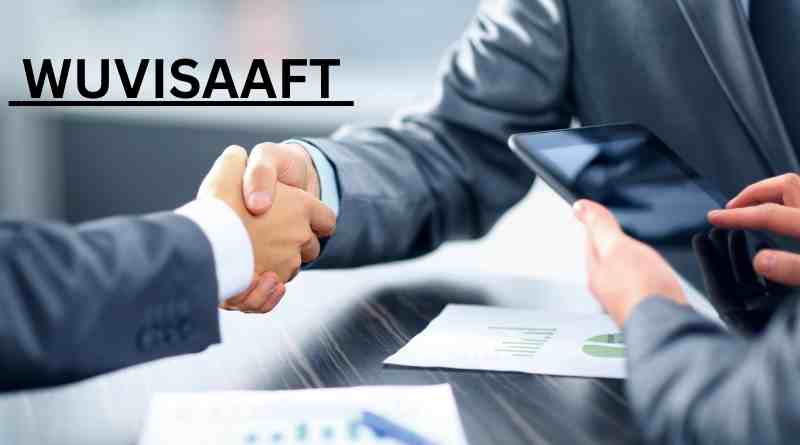In today’s digital age, monitoring bank statements has become more critical than ever. With a myriad of transactions happening every second, it’s easy to lose track of what charges stand for. Among these bewildering array of codes and transactions, one that might have caught your eye is “WUVISAAFT.” This enigmatic term may not ring any bells initially, prompting a flurry of concerns and questions. In this comprehensive exploration, we will decode the mystery of the WUVISAAFT charge, offering insights into its origins, implications, and how you should approach it on your bank statement.
Understanding the WUVISAAFT Charge
The first step in demystifying the WUVISAAFT charge involves understanding what it stands for and its relevance to your financial activities. WUVISAAFT, while appearing cryptic, is often linked to specific types of transactions or services by financial institutions, online platforms, or subscription-based services. The exact nature of this charge can vary significantly based on the context in which it’s applied, making it crucial to approach its investigation with a clear strategy.
The Source of WUVISAAFT Charges
Identifying the source of WUVISAAFT charges requires a bit of detective work. Typically, these charges are associated with automated transactions or recurring payments. This could range from membership fees for online services, automatic renewals for subscriptions, or even charges related to financial operations like wire transfers or automated bill payments. Given the broad possibilities, pinpointing the exact source can be challenging but not insurmountable.
Impact on Your Financial Health
Unrecognized charges like WUVISAAFT on your bank statement can have a more profound impact than merely causing confusion. They can affect your financial planning, budgeting, and even your credit score if they lead to overdrafts or unpaid balances. Understanding and addressing these charges promptly ensures they don’t disrupt your financial stability.
Strategies for Addressing WUVISAAFT Charges
Upon discovering a WUVISAAFT charge, there are several steps you should undertake to resolve any potential issues. These include:
- Reviewing Transaction Histories: Look through your transaction history for any clues that might explain the WUVISAAFT charge. Often, the timing of the charge or associated transactions can offer insights.
- Contacting Your Bank: Your bank or financial institution can provide specific details about the charge, including the originator and the nature of the transaction.
- Verifying Subscriptions and Automated Payments: Check your subscriptions and automated payments. The WUVISAAFT charge could be linked to a service you’ve subscribed to or a recurring payment you’ve authorized.
- Fraud Prevention Measures: If the charge doesn’t align with any known transactions or subscriptions, it could indicate fraudulent activity. Contacting your bank immediately to report suspicious charges is vital for protecting your account.
Preventing Unwanted Charges
Prevention is always better than cure, especially concerning unexpected bank charges. Regular monitoring of your bank statements, keeping track of subscriptions, and using dedicated services for online transactions can minimize the risk of encountering charges like WUVISAAFT. Additionally, setting up alerts for transactions can help you stay informed about any activity on your account, enabling you to act swiftly should anything unusual arise.
Legal and Consumer Rights
Understanding your rights is crucial when dealing with unexplained charges. Depending on your jurisdiction, there are typically regulations in place to protect consumers from unauthorized transactions. Familiarizing yourself with these protections can empower you to dispute charges and seek refunds when applicable. Moreover, knowing the process for lodging complaints with financial institutions and consumer protection agencies can be invaluable.
The Future of Bank Charges and Transparency
The digital finance landscape is ever-evolving, with increasing calls for transparency and consumer protection. Innovations in banking technology promise to make understanding charges like WUVISAAFT more straightforward, offering clearer explanations and easier dispute processes. As consumers become more financially savvy, the expectation for detailed transaction information is likely to lead to improvements in how banks and services communicate charges.
Conclusion
The WUVISAAFT charge on your bank statement, while initially perplexing, is not an insurmountable mystery. With diligent investigation, a clear understanding of your financial habits, and knowledge of your consumer rights, you can decode its origins and implications. Whether it’s a legitimate charge for a forgotten subscription or an alert to unauthorized activity, addressing it promptly is crucial. As we move forward, the collective push for greater financial transparency and accountability will hopefully make puzzling charges a thing of the past, leading to a more informed and empowered approach to personal finance management.
READ ALSO: CHECK

